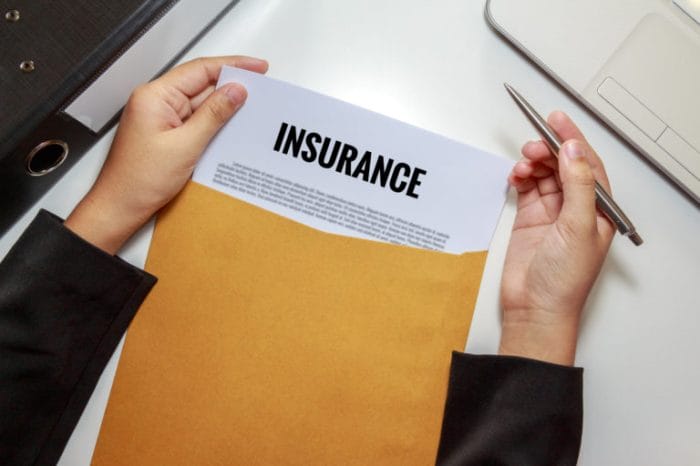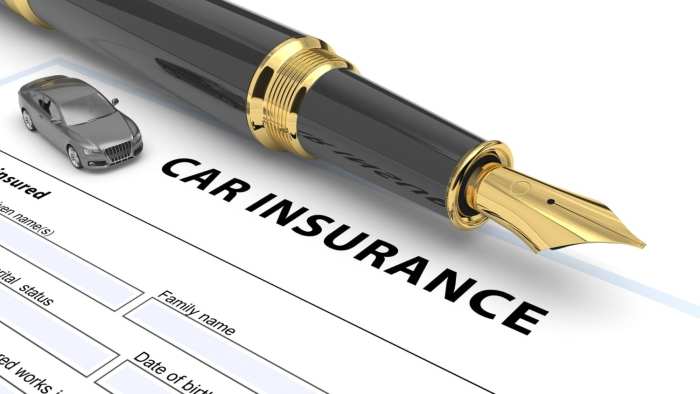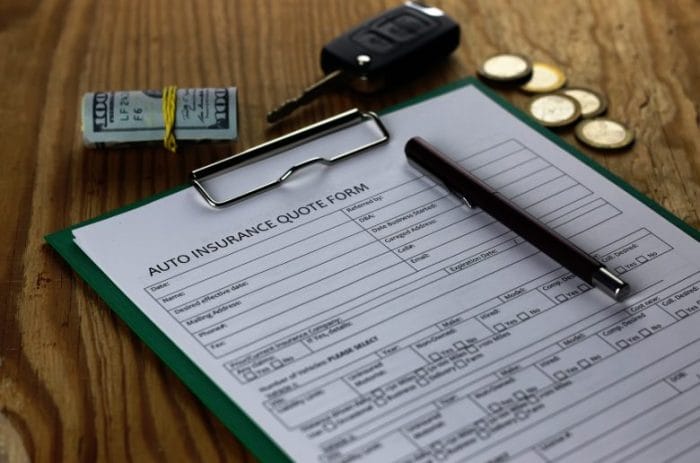Stepping into the world of car ownership comes with a host of responsibilities, one of which is securing auto insurance. For first-time buyers, navigating the complexities of insurance policies, coverage options, and premiums can be daunting. This comprehensive guide will equip you with the knowledge and insights to make informed decisions about your auto insurance, ensuring you’re protected on the road.
From understanding different policy types and coverage limits to comparing quotes and choosing the right insurance company, we’ll cover it all. We’ll also delve into long-term planning considerations and provide additional resources to support you throughout your insurance journey.
Insurance Policy Types

Understanding the types of auto insurance policies available is essential for first-time auto insurance buyers. Different policies provide varying levels of coverage, catering to diverse needs and situations. Here’s a breakdown of the most common auto insurance policies:
Liability Insurance
Liability insurance is mandatory in most states. It protects you financially if you cause an accident resulting in bodily injury or property damage to others. Liability coverage has two components:
- Bodily Injury Liability: Covers medical expenses, lost wages, and pain and suffering for injuries caused to others in an accident you are at fault for.
- Property Damage Liability: Covers damages caused to someone else’s property, such as their vehicle or fence, in an accident you are at fault for.
Collision Insurance
Collision insurance covers damages to your vehicle resulting from a collision with another vehicle or object, regardless of who is at fault. It is optional but highly recommended, especially if you have a new or expensive vehicle.
Comprehensive Insurance
Comprehensive insurance covers damages to your vehicle caused by events other than collisions, such as theft, vandalism, fire, hail, or natural disasters. It is also optional but recommended if you live in an area prone to these events.
Coverage Limits and Deductibles

In auto insurance, coverage limits and deductibles play crucial roles in determining the extent of financial protection and the policyholder’s out-of-pocket expenses.
Coverage Limits:
Coverage limits specify the maximum amount of money the insurance company will pay for covered losses or damages. These limits vary depending on the type of coverage and the policy’s terms.
- Liability Coverage: Liability coverage protects the policyholder against legal claims for bodily injury or property damage caused to others while operating the insured vehicle. Common liability coverage limits include $25,000/$50,000/$25,000, which represent the maximum amounts the insurance company will pay for each person’s bodily injury, all persons’ bodily injuries in a single accident, and property damage, respectively.
- Collision Coverage: Collision coverage pays for damages to the policyholder’s own vehicle resulting from a collision with another vehicle or object. Coverage limits for collision coverage are typically expressed as a dollar amount, such as $10,000 or $20,000.
- Comprehensive Coverage: Comprehensive coverage provides protection against damages caused by events other than collisions, such as theft, vandalism, fire, and natural disasters. Similar to collision coverage, comprehensive coverage limits are usually expressed as a dollar amount.
Deductibles:
A deductible is the amount the policyholder must pay out-of-pocket before the insurance company begins to cover the remaining costs of a covered loss. Deductibles can vary from $0 to $1,000 or more, depending on the type of coverage and the policyholder’s preferences.
Factors Influencing Coverage Limits and Deductibles:
Several factors influence the selection of appropriate coverage limits and deductibles:
- Risk Tolerance: Policyholders with a higher risk tolerance may opt for lower coverage limits and higher deductibles to reduce their insurance premiums. Conversely, those with a lower risk tolerance may prefer higher coverage limits and lower deductibles to ensure comprehensive protection.
- Financial Situation: The policyholder’s financial situation also plays a role. Those with limited financial resources may choose higher deductibles to lower their premiums, while those with more disposable income may opt for lower deductibles to minimize out-of-pocket expenses in the event of a covered loss.
- Vehicle Value: For collision and comprehensive coverage, the value of the insured vehicle influences the selection of coverage limits. Higher-value vehicles typically require higher coverage limits to ensure adequate protection.
- State Requirements: Some states have minimum liability coverage requirements that policyholders must meet. These requirements vary from state to state, and policyholders should ensure they comply with the legal minimums.
Choosing appropriate coverage limits and deductibles is crucial for balancing financial protection with affordability. Policyholders should carefully consider their individual circumstances and risk tolerance when making these decisions.
Understanding Premiums

Insurance premiums are not fixed amounts and vary based on several factors. Understanding these factors and their impact on premiums can help first-time buyers make informed decisions and potentially lower their insurance costs.
Premiums are calculated using a combination of personal information, vehicle details, and geographic location. Some of the key factors that affect premiums include:
Age and Driving History
- Younger drivers (under 25 years old) typically pay higher premiums due to their perceived higher risk of accidents.
- Drivers with a history of accidents, moving violations, or DUIs will also face higher premiums.
- Maintaining a clean driving record and avoiding traffic violations can help lower premiums.
Vehicle Type
- The make, model, and year of your vehicle can impact your premium. Sports cars and high-performance vehicles generally carry higher premiums than sedans or minivans.
- Additionally, newer vehicles tend to have higher premiums compared to older ones.
Geographic Location
- Premiums can vary significantly based on the geographic location where you live. Urban areas typically have higher premiums than rural areas due to increased traffic congestion and higher accident rates.
Tips for Lowering Premiums
- Shop around for quotes: Comparing quotes from multiple insurance companies can help you find the best deal. Online comparison tools can simplify this process.
- Consider raising your deductible: Increasing your deductible (the amount you pay out of pocket before insurance coverage kicks in) can lower your premium. However, ensure you can afford the higher deductible if you need to file a claim.
- Bundle your policies: If you have multiple insurance policies (e.g., auto and home), bundling them with the same company can often lead to discounts.
- Maintain a good credit score: Some insurance companies offer discounts to drivers with good credit scores.
- Take advantage of discounts: Many insurance companies offer discounts for things like taking a defensive driving course, installing anti-theft devices, or being a student with good grades.
Comparing Quotes

Navigating the world of auto insurance as a first-time buyer can be daunting, especially when it comes to finding the right coverage at a competitive price. Comparing quotes from multiple insurance companies is a crucial step in making an informed decision.
By exploring different options, you can find a policy that suits your specific needs and budget.
Below is a comparison table that showcases the insurance quotes from various providers, allowing you to easily compare coverage, deductibles, and premiums:
| Insurance Company | Coverage | Deductible | Premium |
|---|---|---|---|
| Company A | Comprehensive and Collision | $500 | $1,200 |
| Company B | Liability Only | $1,000 | $800 |
| Company C | Comprehensive, Collision, and Liability | $2,000 | $1,500 |
Discounts and Benefits

Insurance companies offer a variety of discounts and benefits to attract and retain customers. These can help first-time auto insurance buyers save money on their premiums.
Common discounts include:
Multi-Car Discounts
Many insurance companies offer discounts to customers who insure multiple vehicles with them. This discount can range from 5% to 20% per vehicle.
Good Driver Discounts
Insurance companies often offer discounts to drivers with a clean driving record. This discount can range from 5% to 15%.
Anti-Theft Device Discounts
Installing an anti-theft device in your car can help you qualify for a discount from your insurance company. This discount can range from 5% to 10%.
Defensive Driving Course Discounts
Taking a defensive driving course can help you qualify for a discount from your insurance company. This discount can range from 5% to 10%.
Other benefits that insurance companies may offer include:
Roadside Assistance
Many insurance companies offer roadside assistance as a benefit to their customers. This service can include towing, jump-starts, and flat tire changes.
Accident Forgiveness
Some insurance companies offer accident forgiveness as a benefit to their customers. This means that your rates will not increase after your first at-fault accident.
Rental Car Reimbursement
Some insurance companies offer rental car reimbursement as a benefit to their customers. This benefit can help you cover the cost of a rental car if your car is damaged in an accident.
Choosing an Insurance Company
Selecting the right insurance company is crucial to ensure you have reliable coverage and exceptional customer service. Consider these key factors:
Financial Stability
Assess the financial stability of the insurance company. A financially stable company is more likely to honor claims and provide long-term coverage.
- Check the company’s financial ratings from reputable agencies like A.M. Best, Standard & Poor’s, and Moody’s.
- Look for companies with strong ratings, indicating their ability to meet financial obligations.
Customer Service Reputation
Research the company’s customer service reputation. Excellent customer service ensures a smooth claims process and prompt assistance.
- Read online reviews and testimonials from policyholders.
- Inquire about the company’s claims settlement ratio, indicating the percentage of claims paid out.
Compare Financial Stability and Customer Service Ratings
| Company | Financial Stability | Customer Service |
|---|---|---|
| Company A | AA | 9/10 |
| Company B | A+ | 8/10 |
| Company C | A | 7/10 |
The table above compares the financial stability and customer service ratings of three insurance companies. Company A has the highest financial stability rating and a strong customer service score. Company B has a slightly lower financial stability rating but a high customer service rating.
Company C has a lower financial stability rating and a lower customer service rating.
Understanding Claims Process

Filing an insurance claim after an accident or loss can be a daunting task, especially for first-time auto insurance buyers. Navigating the claims process effectively requires a clear understanding of the steps involved and the necessary documentation to support your claim.
Reporting the Claim
- Contact Your Insurance Company Immediately:
As soon as possible after an accident or loss, contact your insurance company to report the claim. They will provide you with instructions on how to proceed and the necessary forms to complete. - Gather Necessary Information:
Be prepared to provide the following information when reporting your claim:- Your name, policy number, and contact information
- Date, time, and location of the accident or loss
- Details of the accident or loss, including a description of the damage or injuries
- Names and contact information of any witnesses
- Police report (if applicable)
Documenting the Claim
- Take Photos:
Take clear and detailed photos of the damage to your vehicle or property. If there are injuries, take photos of those as well. - Keep Receipts:
Keep all receipts related to the accident or loss, including medical bills, repair estimates, and towing charges. - Obtain Estimates:
If your vehicle is damaged, obtain repair estimates from at least two qualified repair shops.
Filing the Claim
- Complete the Claim Form:
Your insurance company will provide you with a claim form to complete. Fill out the form accurately and completely, providing all the necessary information and documentation. - Submit the Claim:
Once you have completed the claim form and gathered all the necessary documentation, submit your claim to your insurance company. You can do this online, by mail, or in person.
Claims Investigation
- Insurance Company Review:
Your insurance company will review your claim and the supporting documentation. They may also send an adjuster to inspect the damage or injuries. - Settlement Offer:
Once the insurance company has completed their investigation, they will make a settlement offer. This is the amount of money they are willing to pay to cover your claim.
Settlement and Payment
- Review the Settlement Offer:
Carefully review the settlement offer from your insurance company. Make sure it covers all the damages or injuries you sustained. - Negotiate the Settlement:
If you believe the settlement offer is too low, you can negotiate with your insurance company to try to increase the amount. - Accept the Settlement:
Once you are satisfied with the settlement offer, accept it and sign the release form. Your insurance company will then issue payment to you.
Safety Features and Discounts
Modern vehicles are increasingly equipped with advanced safety features that not only enhance the driving experience but can also potentially lower insurance premiums. These features are designed to prevent accidents, minimize damage, and protect occupants, resulting in a lower risk profile for insurance companies.
To incentivize drivers to choose safer vehicles, many insurance companies offer discounts for vehicles equipped with specific safety features. The availability and amount of discounts can vary depending on the insurance company and the specific features installed in the vehicle.
Common Safety Features and Corresponding Discounts
The following table showcases some common safety features and the corresponding discounts offered by insurance companies:
| Safety Feature | Discount Range |
|---|---|
| Anti-lock Brake System (ABS) | 5-10% |
| Traction Control System (TCS) | 5-10% |
| Electronic Stability Control (ESC) | 5-15% |
| Airbags (front, side, curtain) | 5-15% |
| Lane Departure Warning System (LDWS) | 5-10% |
| Forward Collision Warning System (FCWS) | 5-10% |
| Automatic Emergency Braking (AEB) | 10-15% |
| Adaptive Cruise Control (ACC) | 5-10% |
| Blind Spot Monitoring System (BSM) | 5-10% |
| Rearview Camera | 5-10% |
It’s important to note that the actual discount amount may vary depending on the insurance company, the vehicle make and model, the driver’s age and driving history, and other factors.
Long-Term Planning

Considering long-term factors when purchasing auto insurance is essential to ensure adequate coverage as your circumstances evolve. Life changes, such as marriage, having children, or purchasing additional vehicles, can impact your insurance needs.
Adjusting Coverage Limits
As your family grows or your financial situation changes, you may need to adjust your coverage limits. Higher liability limits can protect you from potential lawsuits, while increased comprehensive and collision coverage can provide peace of mind in case of accidents or theft.
Adding or Removing Vehicles
If you purchase an additional vehicle, you’ll need to add it to your insurance policy. Conversely, if you sell or retire a vehicle, you can remove it from your coverage to save money.
Reviewing Your Policy Regularly
Your insurance needs can change over time, so it’s important to review your policy regularly. This allows you to make adjustments as necessary and ensure you’re not overpaying for coverage you don’t need or underinsured in case of an accident.
Considering Life Events
Significant life events, such as getting married or having children, can affect your insurance rates. It’s important to notify your insurance company about these changes, as they may impact your risk profile and premiums.
Planning for Future Purchases
If you plan to purchase a new or more expensive vehicle in the future, consider increasing your coverage limits accordingly. This ensures you’re adequately protected in case of an accident or theft.
Additional Resources
Navigating the world of auto insurance can be daunting, especially for first-time buyers. Fortunately, there are numerous reputable websites, online resources, and government agencies that provide comprehensive information and guidance tailored to help you make informed decisions.
Exploring these resources can equip you with a deeper understanding of auto insurance policies, coverage options, and the claims process. Additionally, they can provide valuable insights into comparing quotes, understanding premiums, and identifying potential discounts and benefits.
Essential Resources
- Insurance Information Institute (III): The III is a non-profit organization dedicated to providing accurate and up-to-date information about insurance. Their website offers a wealth of resources on auto insurance, including guides, articles, and infographics.
- National Association of Insurance Commissioners (NAIC): The NAIC is an organization of state insurance regulators. Their website provides information on auto insurance laws and regulations, as well as consumer resources and complaint-handling procedures.
- Consumer Federation of America (CFA): The CFA is a non-profit organization that advocates for consumer rights. Their website offers information on auto insurance, including tips for shopping for coverage and avoiding scams.
- Your State Insurance Department: Each state has an insurance department that regulates insurance companies and provides consumer resources. You can find your state insurance department’s website by searching online.
Conclusion

As a first-time auto insurance buyer, you now possess the knowledge and tools to navigate the insurance landscape with confidence. Remember, the key to finding the best coverage is to compare quotes, understand your needs, and choose a reputable insurance company.
By following these tips and leveraging the resources provided, you can ensure you’re adequately protected on the road, giving you peace of mind as you embark on your driving adventures.
Q&A
Q: How can I potentially lower my insurance premiums as a first-time buyer?
A: To lower your premiums, consider opting for a higher deductible, maintaining a good driving record, choosing a vehicle with safety features, and exploring discounts offered by insurance companies.
Q: What factors should I consider when selecting an insurance company?
A: When choosing an insurance company, consider their financial stability, customer service reputation, and the range of coverage options they offer.
Q: What is the process for filing an insurance claim in case of an accident or loss?
A: In the event of an accident or loss, contact your insurance company immediately. They will guide you through the claims process, which typically involves submitting a claim form, providing supporting documentation, and arranging for repairs or compensation.
Q: How can certain safety features in a vehicle lower my insurance premiums?
A: Some safety features, such as airbags, anti-lock brakes, and lane departure warnings, can potentially reduce your insurance premiums by demonstrating a lower risk of accidents.
Q: Why is it important to consider long-term factors when purchasing auto insurance?
A: Considering long-term factors ensures your insurance coverage remains adequate as your circumstances evolve. This may include potential life changes, such as marriage or the addition of a new vehicle to your household.



